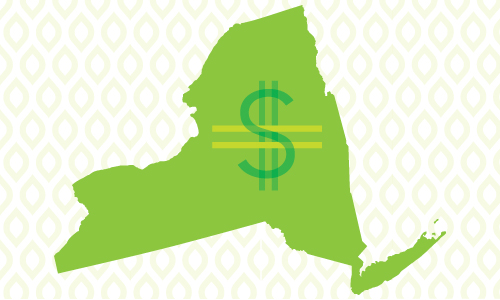APRIL 14, 2015 – In commemoration of National Equal Pay Day on April 14, New Yorkers once again are standing together in cities across the state calling for action to close the gender wage and opportunity gap. A New York City rally, like events in 49 states, is part of a sweeping national campaign for equal pay reform. Westchester, Long Island, Buffalo, and towns across New York will hold activities with a unified call for stronger laws to support women’s lives in 2015.
This year is different with the anticipated passage in late April of a New York Equal Pay bill (A.6075/S1), a plank of the Women’s Equality Act. After decades of advocacy, and over two years of political wrangling, unprecedented bi-partisan support will carry this much needed reform to the Governor to be signed into law.
Why now? Elected officials are responding to the overwhelming public call – across race, gender, economic status, and political party – for legislative measures to ensure equal pay for equal work. A6075/S1 will be a powerful tool to that end by guarantying workers the right to share salary information without penalty, clarifying and closing loopholes in current law, and discouraging employers from unfair pay practices by increasing damages.
This legislation targets pay discrimination which results in a wage gap that deprives women and their families of much need finance resources and long-term security. The statewide wage gap of 86% is smaller than the national average of 78%, but it costs the average full-time female worker in our state $8,250 annually. That translates into more than a year of groceries, 8 months of rent, or 3 years of family health insurance.[i] The penalty is much greater for New York’s African American women and Latinas who earn 66% and 55% respectively[ii], and in regions like Western New York and parts of New York City where women earn closer to78%[iii]. Collectively, the loss of revenue adds up to over $23,000,000,000 for New York State’s economy.[iv]
Working families are especially harmed by the gender wage gap. Women head more than 1,000,000 households in New York, and more than 63% of working mothers in New York are primary breadwinners or co-breadwinners. Paying women their fair share will boost the growth of the middle class and reduce the unacceptable rate of 29% percent of women-headed households who live below the poverty level.
Pay confidentiality policies make it impossible for workers to determine if they are receiving equal pay for equal work, and the “[f]ear of retaliation is the leading reason why people stay silent instead of voicing their concerns about bias and discrimination, ” according to the Supreme Court.[v] With over 60% of private sector employees reporting that they are discouraged or prohibited from discussing wage and salary information, workers need protection from retaliation if they discuss salary information.[vi] The new legislation will provide worker, as well as wage transparency.
The New York Equal Pay bill reflects a welcome shift in the conversation about pay equity from “why” to “how.” Legislative measures, historically unpopular with business, are one important approach. What’s missing is significant action from the business community to find solutions. The smart companies have already caught on to the fact that diverse workforces offer stronger returns, and that retention of female workers is better than the high turnover rates caused by workplace policies, including inequitable compensation, that do not support the needs of employees and their families.
This Equal Pay Day, we call on companies to step up or pay up. Take the lead proactively by committing to a self-audit, and then a plan of action. Doing so will address not only your employees’ potential wage gaps, but their confidence gap, as well.
Beverly Cooper Neufeld, Founder, PowHer New York
[i] National Partnership for Women & Families and AAUW, New York: Working Women and the State’s Wage Gap, April 2013, available at:http://www.aauw.org/files/
[ii] National Women’s Law Center, The Wag Gap: State by State, http://www.nwlc.org/wage-gap-
[iii] National Partnership for Women & Families and AAUW, New York: Working Women and the State’s Wage Gap, April 2013, available at:http://www.aauw.org/files/
[v] See National Women’s Law Center, Combating Punitive Pay Secrecy Policies, April 2011 (quoting Crawford v. Metro. Gov’t of Nashville & Davidson County, 555 U.S. 271, 129 S. Ct. 846, 852 (2009)).
[vi] Institute for Women’s Policy Research, Pay Secrecy and Paycheck Fairness: New Data Shows Pay Transparency Needed, Nov. 2010, available at: www.iwpr.org/press-room/press-


